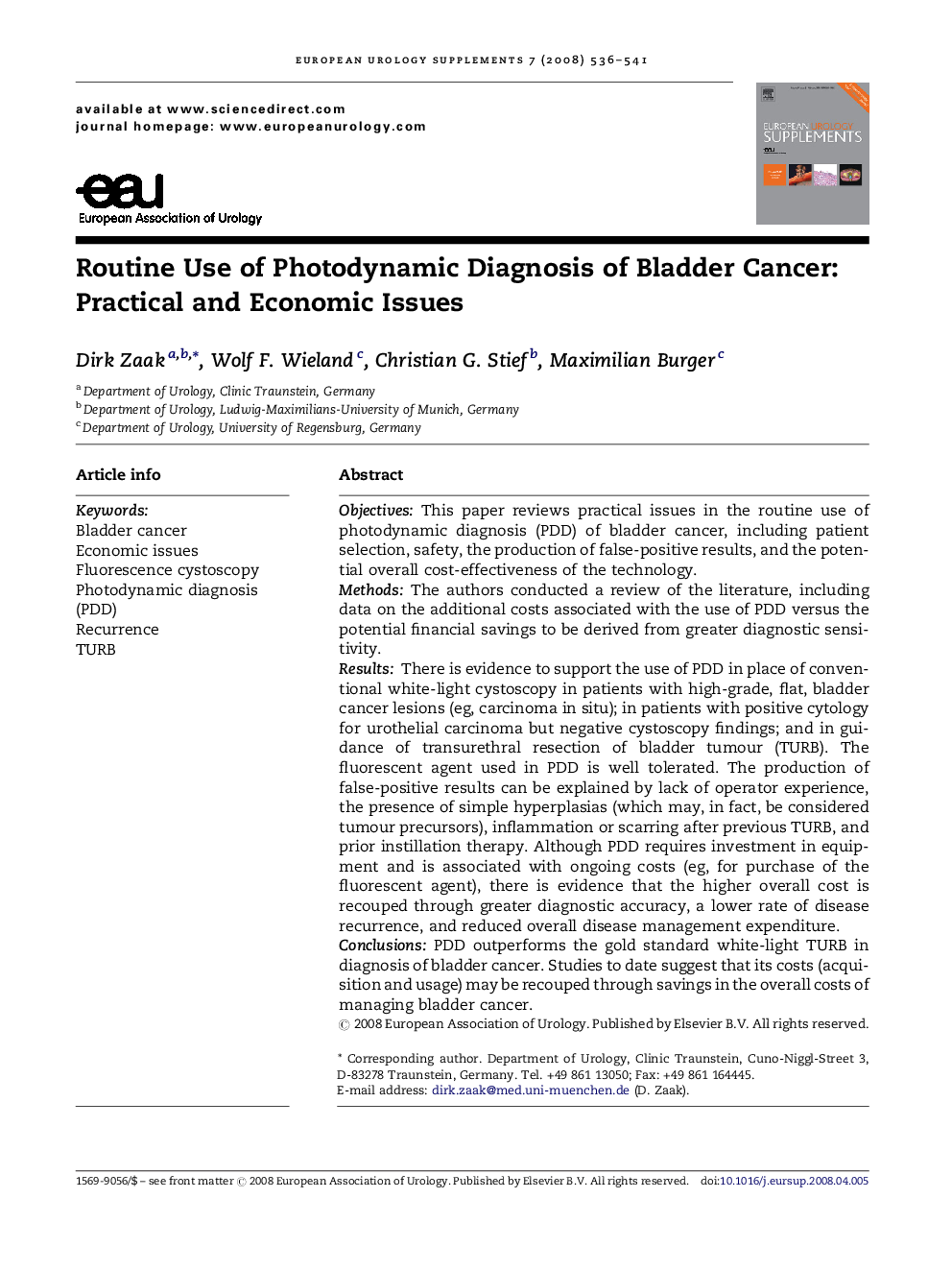| Article ID | Journal | Published Year | Pages | File Type |
|---|---|---|---|---|
| 3934483 | European Urology Supplements | 2008 | 6 Pages |
ObjectivesThis paper reviews practical issues in the routine use of photodynamic diagnosis (PDD) of bladder cancer, including patient selection, safety, the production of false-positive results, and the potential overall cost-effectiveness of the technology.MethodsThe authors conducted a review of the literature, including data on the additional costs associated with the use of PDD versus the potential financial savings to be derived from greater diagnostic sensitivity.ResultsThere is evidence to support the use of PDD in place of conventional white-light cystoscopy in patients with high-grade, flat, bladder cancer lesions (eg, carcinoma in situ); in patients with positive cytology for urothelial carcinoma but negative cystoscopy findings; and in guidance of transurethral resection of bladder tumour (TURB). The fluorescent agent used in PDD is well tolerated. The production of false-positive results can be explained by lack of operator experience, the presence of simple hyperplasias (which may, in fact, be considered tumour precursors), inflammation or scarring after previous TURB, and prior instillation therapy. Although PDD requires investment in equipment and is associated with ongoing costs (eg, for purchase of the fluorescent agent), there is evidence that the higher overall cost is recouped through greater diagnostic accuracy, a lower rate of disease recurrence, and reduced overall disease management expenditure.ConclusionsPDD outperforms the gold standard white-light TURB in diagnosis of bladder cancer. Studies to date suggest that its costs (acquisition and usage) may be recouped through savings in the overall costs of managing bladder cancer.
